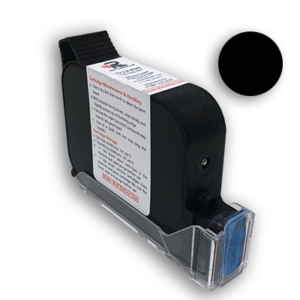Description
The best option is to mark your products with NO maintenance, easy to operate date coding machine from a Canadian Manufacturer. Ideal for small production with no mess and highly economical!
Which application you could mark with date coding machine RNJet H1+:
- Automotive
- Brewery Beer Cans
- Egg Printing
- Face Respirators, PPE & MASKS
- Hand Sanitizer Bottles
- Pallets and Wood Products
- Food & Condiments
- Pharmaceutical & Medical
- Cardboard & Carton
- Pet Food
- Grain & Cement
- Beverage
- Electronic Components
- Cosmetics & Personal Care
- Dairy
Date Coding with RNJet H1+:
- LOT Number
- EXP and MFG Dates (auto)
- Logo
- Barcode (any type, including QR-Code)
- Shift Code (auto)
- Data-base
- Counter
- UDI (GS1 Data Matrix etc.)
- Ingredients
For more information do not hesitate to contact us or visit the related product page.
Date Coding
Date coding machines play a crucial role in applying expiry dates, best-before dates, and other time-sensitive information to products and packaging. These machines use various technologies like inkjet, thermal transfer, and laser to print clear, legible codes directly onto materials.
Some key benefits of effective expiry date coding include:
- Food and Product Safety: Expiry date coding helps ensure consumers receive fresh, safe products by clearly indicating when items should be consumed or discarded. This is especially important for perishable goods like food, pharmaceuticals, and cosmetics.
- Inventory Management: Date codes enable businesses to track product freshness, rotate stock efficiently, and minimize waste and spoilage.
- Traceability and Recalls: In the event of a product recall, date codes allow companies to quickly identify affected batches and streamline the recall process.
- Regulatory Compliance: Many industries have strict regulations around date labeling to provide transparency for consumers. Proper date coding helps businesses meet these legal requirements.
- Brand Protection: Consistent, high-quality date coding reinforces a brand’s image of reliability and quality in the eyes of customers.
The Evolution of Date Coding Technology
Date coding has come a long way from the manual stamping and embossing methods of the past. Today’s advanced date coding machines leverage cutting-edge technologies to deliver faster, more accurate, and more versatile coding solutions.
One of the most significant advancements has been the rise of digital inkjet coding. Inkjet date coders use precise, non-contact printing to apply date, lot, and other variable information directly onto products and packaging. This technology offers several benefits over traditional methods:
- Higher print quality and resolution for clearer, more legible codes
- Faster coding speeds to keep up with high-volume production lines
- Increased flexibility to print complex, customized codes
- Reduced maintenance and consumable costs compared to mechanical coding
Best Practices for Effective Date Coding
Implementing a successful date coding strategy requires careful planning and consideration of several key factors:
- Coding Technology Selection: Choosing the right date coding machine(s) based on factors like production speed, print quality, and integration with existing packaging lines.
- Code Placement: Determining the optimal location on the product or packaging to ensure date codes are clearly visible and accessible.
- Code Content and Format: Selecting the appropriate date code type (e.g., expiry, best-by, production) and format to meet regulatory requirements and customer expectations.
- Ink and Ribbon Selection: Ensuring the coding media is compatible with the product material and environment to maintain legibility over the product’s shelf life.
- Operator Training: Educating staff on proper machine operation, maintenance, and troubleshooting to minimize coding errors and downtime.
The Importance of Date Coding Compliance
Adhering to date coding regulations is crucial for businesses across various industries. Failure to comply with these standards can result in significant penalties, product recalls, and damage to a company’s reputation.
In the food and beverage industry, for example, the U.S. Food and Drug Administration (FDA) requires clear, accurate date labeling to inform consumers about a product’s freshness and safety. Similarly, the pharmaceutical industry has strict guidelines around expiration dates to ensure the potency and efficacy of medications.
Beyond regulatory compliance, date coding also plays a vital role in supply chain management and consumer trust. Consistent, transparent date coding allows businesses to better track inventory, minimize waste, and provide customers with the assurance that they are purchasing fresh, high-quality products.
To ensure compliance and maintain customer confidence, businesses should regularly review and update their date coding practices to align with the latest industry standards and best practices. This may involve investing in new coding equipment, implementing robust quality control measures, and providing comprehensive training for production staff.
Conclusion
Date coding machines and the informative content they provide are essential components of modern manufacturing, packaging, and distribution processes. By leveraging the latest advancements in date coding technology and implementing best practices, businesses can enhance product safety, improve inventory management, and strengthen their brand reputation – all while meeting the growing regulatory and consumer demands for transparency and traceability.











